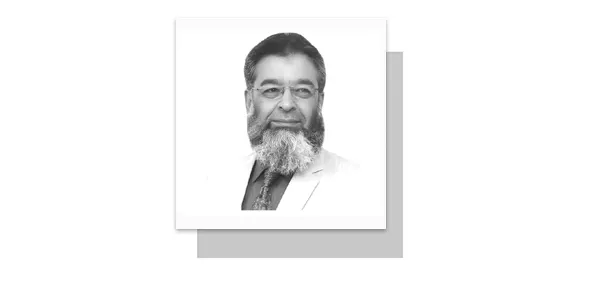THE 13th Five-Year Plan (2024-2029), titled “Uraan Pakistan,” outlines a strategic roadmap to propel Pakistan toward sustainable development, economic resilience and societal progress. At a pivotal juncture, Pakistan aims to address systemic obstacles that have hindered previous plans while drawing lessons from past experiences. This new vision seeks transformative growth and equitable development to fulfil national aspirations. Dr. Mehboob-ul-Haq’s Pakistan Five-Year Plan (1983-1988) remains a landmark in the country’s developmental history. His approach prioritized human development over mere economic expansion, emphasizing poverty alleviation, better healthcare, education and equity. These efforts aimed to ensure that industrial and agricultural growth benefited marginalized populations. However, political instability, leadership changes and governance inefficiencies stymied plan’s full realization. Despite these challenges, foundational principles of poverty reduction and rural development continue to shape policy-making.
Later Five-Year Plans, particularly the 11th (2013-2018) and 12th (2018-2023), sought to build on earlier initiatives. The 11th Plan prioritized macroeconomic stability, industrial expansion and human resource development. Reforms in energy, education and health yielded partial success, yet broader objectives were hindered by political turbulence and policy execution gaps. Key issues like energy crises, underfunded human capital and delayed infrastructure projects persisted. The 12th Plan aimed for economic stabilization, poverty reduction and improved governance. However, ambitious targets of 7-8% GDP growth were derailed by internal and external factors, including COVID-19 pandemic. Fiscal deficits, inflation & low foreign direct investment exacerbated economic challenges. Despite setbacks, improvements in health and education provided hope, though corruption, mismanagement & inefficiency continued to obstruct progress. Recurring themes in the incomplete implementation of previous plans include political instability and a lack of continuity in governance. Successive administrations often sidelined existing plans, leading to fragmented efforts. Governance inefficiencies, bureaucratic red tape and corruption undermined developmental initiatives. Delayed infrastructure projects, poor interdepartmental coordination and inadequate resource allocation remained persistent barriers. Additionally, weak accountability mechanisms allowed inefficiencies to persist unchecked. Economic constraints compounded these issues. Pakistan’s reliance on foreign loans and aid made it vulnerable to global economic fluctuations. High external debt, an unstable currency and a limited industrial base constrained self-sustained growth.
Despite these hurdles, “Uraan Pakistan” offers a renewed vision for progress. It focuses on fostering a knowledge-based economy, promoting environmental sustainability and enhancing social infrastructure. By prioritizing innovation, digital transformation and advancements in information technology, renewable energy and agriculture, the plan seeks to position Pakistan as a competitive global player. Key initiatives aim to strengthen healthcare and education systems, empowering youth to contribute to national development. A defining feature of “Uraan Pakistan” is its commitment to inclusive growth. The plan aspires to extend developmental benefits to marginalized groups, particularly women and rural communities. Addressing poverty, job creation and social mobility aims to foster a more equitable distribution of resources. Recognizing the urgency of climate change, the plan integrates measures for green technologies, water conservation and sustainable agricultural practices. Environmental stewardship reflects Pakistan’s commitment to combating pollution and resource depletion.
Furthermore, the success of “Uraan Pakistan” hinges on addressing past challenges and fostering accountability and good governance. Political stability and policy continuity are crucial for achieving its objectives. A unified approach involving federal and provincial governments, private sector stakeholders, and civil society organizations is essential. Strengthening governance frameworks, combating corruption, and implementing transparent monitoring mechanisms are critical to preventing delays and inefficiencies. Institutional capacity building and clear performance benchmarks must guide efforts to ensure tangible outcomes. Economic sustainability is another key area requiring attention. Reducing reliance on foreign debt and promoting domestic industrial growth are vital for long-term stability. The plan emphasizes building a robust, export-oriented economy driven by innovation and technology. Efficient and transparent financial resource allocation, coupled with rigorous oversight, will be crucial for success. Encouraging the development of small and medium enterprises (SMEs) and diversifying export portfolios will also strengthen the economic fabric.
The government must also foster an enabling environment for private sector participation. Public-private partnerships can accelerate infrastructure development and technological innovation. Investments in renewable energy, digital infrastructure, and skill development will enhance economic resilience and competitiveness. The role of the Diaspora in contributing through investments, expertise, and remittances should also be harnessed effectively. Education and healthcare are central to the 13th Plan’s vision. Investing in quality education and vocational training will equip the workforce for a rapidly evolving global economy. Simultaneously, strengthening the healthcare system through increased funding, improved access, and better facilities will enhance societal well-being and productivity. Special emphasis on women’s education and health will have far-reaching impacts on the overall development trajectory.
Environmental sustainability, a cornerstone of “Uraan Pakistan,” requires concerted efforts to address pressing challenges. Policies for water conservation, afforestation, and renewable energy adoption will mitigate the adverse effects of climate change. Collaborating with international partners and leveraging global best practices will further bolster Pakistan’s environmental strategy. Awareness campaigns to promote community involvement in conservation efforts are equally important for achieving lasting results. In conclusion, the 13th Five-Year Plan represents a beacon of hope for Pakistan’s future. By learning from past experiences and adopting a holistic approach, “Uraan Pakistan” has the potential to transform the nation into a model of sustainable development and inclusive growth. Achieving this vision will require unwavering political will, effective governance, and active participation from all sectors of society. Through collective effort, a commitment to progress and a focus on innovation and equity, Pakistan can soar to new heights of prosperity, fulfilling the aspirations of its people and securing a brighter future for generations to come.
—The writer is contributing columnist, based in Islamabad.
(ememiqbal68@gmail.com)










